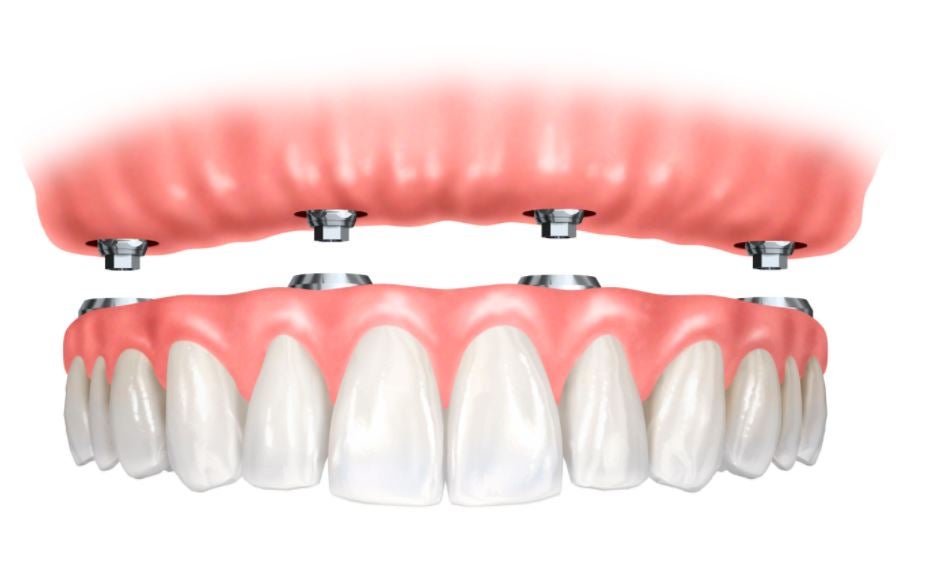Dental Sense Fundamentals Explained
Dental Sense Fundamentals Explained
Blog Article
How Dental Sense can Save You Time, Stress, and Money.
Table of ContentsThe 7-Minute Rule for Dental SenseThe Ultimate Guide To Dental SenseDental Sense Can Be Fun For AnyoneThe 20-Second Trick For Dental Sense
are clinical devices surgically dental implanted right into the jaw to restore a person's ability to chew or their look. They supply assistance for artificial (phony) teeth, such as crowns, bridges, or dentures. When a tooth is lost as a result of injury or disease, an individual can experience issues such as rapid bone loss, malfunctioning speech, or changes to eating patterns that cause discomfort.Oral implant systems consist of a dental implant body and oral implant joint and may also consist of an abutment fixation screw. Kids dental. The dental implant body is operatively inserted in the jawbone instead of the tooth's origin. The oral implant joint is usually attached to the implant body by the joint addiction screw and extends via gums right into the mouth to support the affixed fabricated teeth
(https://justpaste.it/hj6ob)Structure of The Oral Implant System choosing oral implants, speak to your dental provider regarding the potential benefits and dangers, and whether you are a candidate for the procedure. Points to think about: Your total health and wellness is a crucial element in establishing whether you are a great candidate for dental implants, for how long it will certainly require to recover, and how much time the implant may remain in area.
Smoking might impact the recovery process and reduce the lasting success of the implant. The healing process for the implant body may take a number of months or longer, during which time you commonly have a temporary joint in location of the tooth. the oral implant procedure: Very carefully adhere to the dental hygiene guidelines offered to you by your oral service provider.
The Ultimate Guide To Dental Sense
Implant failure can result in the demand for an additional surgery to take care of or replace the dental implant system. Recovers the ability to chew Recovers cosmetic look Assists keep the jawbone from diminishing due to bone loss Preserves the health of the surrounding bone and gum tissues Assists maintain adjacent (nearby) teeth steady Improves lifestyle Damages to bordering natural teeth throughout implant positioning Injury to the surrounding cells during surgical procedure, such as sinus opening Injury throughout surgery (as an example, crack of surrounding jawbone) Poor feature, such as feeling like the teeth do not bite together normally A feeling that the tooth is loose or turning in position arising from an abutment screw loosening up Implant body failing (looseness of the dental implant body) because of systemic infection, which might be most likely in patients with unchecked diabetes as a result of regional infection in bone and gums supporting the dental implant body as a result of postponed healing, which might be more probable in clients that smoke Difficulty cleaning the gums around the dental implant, leading to inadequate oral hygiene Without treatment gum illness Post-surgical tingling because of nerve impingement or damages Constantly alert healthcare carriers and imaging technicians that you have oral implants before any kind of magnetic vibration imaging (MRI) or x-ray treatments.
FDA is not knowledgeable about any type of negative events reported for MRI or x-ray procedures with oral implants. Oral implants systems are typically made from materials that adhere to international agreement requirements of the International Organization for Standardization (ISO) or ASTM International. These standards have details of what makes a risk-free product.

A dental implant is a structure that changes a missing out on tooth. With screw-like tools, the cosmetic surgeon inserts an implant into the jawbone, and it serves as an anchor for an artificial tooth, called a crown. A gadget called an abutment attaches the artificial tooth to the dental implant. The crown is personalized to fit the individual's mouth and match the color of their teeth.
The Main Principles Of Dental Sense
Some people are not eligible for dental implant surgical procedure. It is for oral doctors to run on individuals with: intense illnessuncontrollable metabolic diseasebone or soft tissue disease or infectionIf these issues are fixed, an individual can have the surgical procedure. In, oral surgeons abstain from running on people with: If individuals with any of the above undertake oral implant surgical treatment, there is a greater threat of the dental implant failing.

Oral dental implant surgical procedure is an individualized process. It's not the exact same for everybody. The adhering to offers a general introduction of what you can expect your dental expert, dental surgeon, periodontist or prosthodontist to do: Position the implant surgically. Offer you time to recover. Attach the post and final crown, bridge or denture.
Next off, your doctor will carefully place the dental implant right into your jaw. If your dental implant is near the front of your mouth, your dental expert will make a short-lived tooth for you to use till you recover.
Getting The Dental Sense To Work
Your supplier can inform you what to anticipate in your circumstance. Throughout the healing stage, your jawbone needs to fuse to the dental implant. This procedure, called osseointegration, is essential for stability and long-term success. This procedure can take anywhere from three to nine months. In some cases, it may take much longer.
Once your dental implant heals, your dentist can connect the abutment (tiny adapter blog post) and your last reconstruction (crown, bridge or denture). This normally takes regarding one hour to complete and might need a 2nd minor surgical procedure. useful source You should not really feel any type of pain throughout your dental implant treatment since your copyright will utilize drug to numb your gums.
Report this page